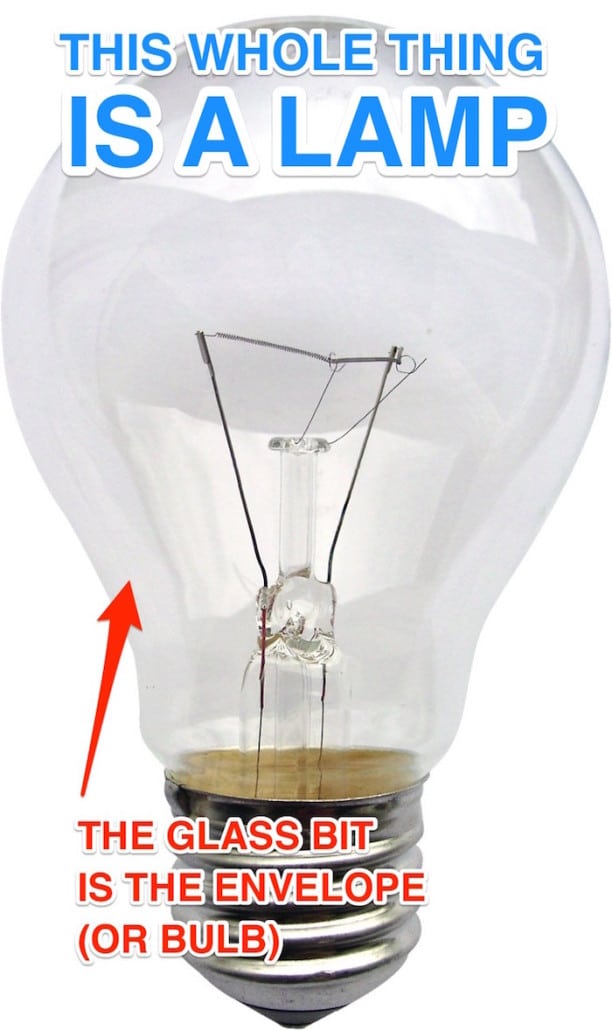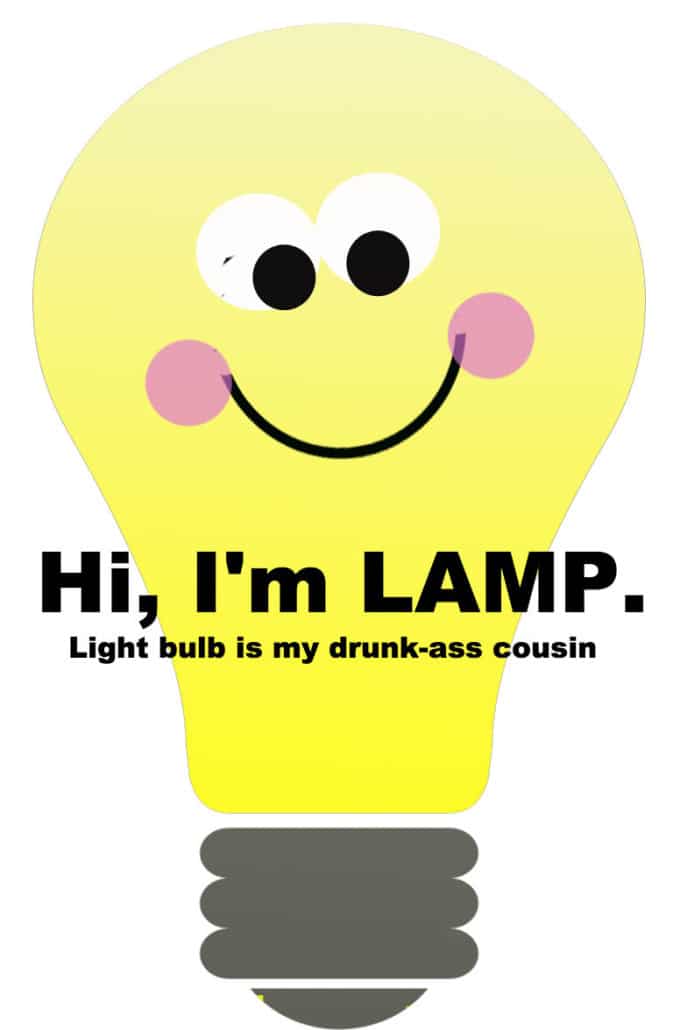
Yes, that old adage about lamps versus light bulbs. To be fair, they do kinda look like a bulb of some sort, like a rose bulb. So, in essence, it’s almost complimentary, because people want them to be like flowers. “Light bulb.”
That doesn’t excuse your ignorance, though.
Lamps are things that produce light; you can argue that the fixture is a lamp. That’s acceptable. Bulb, on the other hand, refers to the glass envelope surrounding the filament in a lamp.
So, there you have it. Even if you do a search on the internet, no one really gives a shit what we call it. Did you know that? Seriously. Nobody but us cares, and the argument is so old that even Hipsters don’t give a shit anymore.

Just to make this post worth something more than a chuckle, I actually found a bit of text on a government website (energy.gov) about the invention of the “light bulb” and some of its idiosyncrasies:
Long before Thomas Edison patented — first in 1879 and then a year later in 1880 — and began commercializing his incandescent light bulb, British inventors were demonstrating that electric light was possible with the arc lamp. In 1835, the first constant electric light was demonstrated, and for the next 40 years, scientists around the world worked on the incandescent lamp, tinkering with the filament (the part of the bulb that produces light when heated by an electrical current) and the bulb’s atmosphere (whether air is vacuumed out of the bulb or it is filled with an inert gas to prevent the filament from oxidizing and burning out). These early bulbs had extremely short lifespans, were too expensive to produce or used too much energy.
When Edison and his researchers at Menlo Park came onto the lighting scene, they focused on improving the filament — first testing carbon, then platinum, before finally returning to a carbon filament. By October 1879, Edison’s team had produced a light bulb with a carbonized filament of uncoated cotton thread that could last for 14.5 hours. They continued to experiment with the filament until settling on one made from bamboo that gave Edison’s lamps a lifetime of up to 1,200 hours — this filament became the standard for the Edison bulb for the next 10 years. Edison also made other improvements to the light bulb, including creating a better vacuum pump to fully remove the air from the bulb and developing the Edison screw (what is now the standard socket fittings for light bulbs).
(Historical footnote: One can’t talk about the history of the light bulb without mentioning William Sawyer and Albon Man, who received a U.S. patent for the incandescent lamp, and Joseph Swan, who patented his light bulb in England. There was debate on whether Edison’s light bulb patents infringed on these other inventors’ patents. Eventually Edison’s U.S. lighting company merged with the Thomson-Houston Electric Company — the company making incandescent bulbs under the Sawyer-Man patent — to form General Electric, and Edison’s English lighting company merged with Joseph Swan’s company to form Ediswan in England.)
What makes Edison’s contribution to electric lighting so extraordinary is that he didn’t stop with improving the bulb — he developed a whole suite of inventions that made the use of light bulbs practical. Edison modeled his lighting technology on the existing gas lighting system. In 1882 with the Holborn Viaduct in London, he demonstrated that electricity could be distributed from a centrally located generator through a series of wires and tubes (also called conduits). Simultaneously, he focused on improving the generation of electricity, developing the first commercial power utility called the Pearl Street Station in lower Manhattan. And to track how much electricity each customer was using, Edison developed the first electric meter.
While Edison was working on the whole lighting system, other inventors were continuing to make small advances, improving the filament manufacturing process and the efficiency of the bulb. The next big change in the incandescent bulb came with the invention of the tungsten filament by European inventors in 1904. These new tungsten filament bulbs lasted longer and had a brighter light compared to the carbon filament bulbs. In 1913, Irving Langmuir figured out that placing an inert gas like nitrogen inside the bulb doubled its efficiency. Scientists continued to make improvements over the next 40 years that reduced the cost and increased the efficiency of the incandescent bulb. But by the 1950s, researchers still had only figured out how to convert about 10 percent of the energy the incandescent bulb used into light and began to focus their energy on other lighting solutions.
Have a great Friday!






